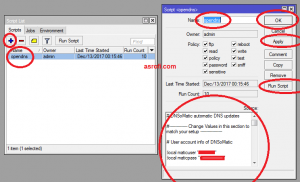

4-node Raspberry Pi K3s / Ubuntu Server cluster for ARM-compatible containerized workloads.3-node Proxmox VE cluster for KVM based virtual machines and LXC containers.Codified & documented config leading to trivial re/deployments.Totally separate lab env from home (don’t want tinkering to impact “home” WiFi, DNS, storage, etc in any way).Raspberry Pis always on, power-hungry servers powered on as needed - so any “critical” roles (dynamic DNS updater, etc) should reside on a Raspberry Pi.A stable base platform of hypervisors & container hosts on physical hardware, on which further virtualized or containerized products can be easily deployed without impact to the base platform.Basic provisioning & configuration of both supporting infrastructure and additional products is documented here - mostly so I remember how I did stuff. The main address for it is 1.1.1.1, with an alternate of 1.0.0.1.This (WIP) page describes a home lab environment for evaluation and testing of various technologies. If you trust Google less than your ISP, you can also use CloudFlare’s DNS, which claims to be the fastest and takes a privacy-first stance. The most common is Google’s Public DNS, which use the addresses 8.8.8.8 and 8.8.4.4. If you want to switch to a public DNS server, you have a few options. RELATED: How to Choose the Best (and Fastest) Alternative DNS Server Which Public DNS Server Should You Use? It’s usually just a difference of milliseconds, though, which might not matter much to you. This isn’t always the case, as your ISP will generally be closer to you than a third party, but many people get faster speeds with a third-party DNS server. In addition to privacy concerns, DNS services provided by ISPs can be slower than Google or Cloudflare.

RELATED: How to Choose the Best VPN Service for Your Needs Third-Party DNS Servers Might Be Faster, Too You can check out our guide on VPNs to learn more about them. Using a virtual private network (VPN) for your daily browsing is the only real way to prevent your ISP from seeing what you’re connecting to online. Changing DNS servers won’t stop your ISP from tracking, but it will make it a little harder. They can glean a lot of information about your browsing habits this way. They can also see the IP addresses you connect to, regardless of which DNS server you use. Of course, DNS isn’t the only way ISPs track you. Browsing history like this is the kind of valuable data off of which many companies make huge profits. Every request sent can be logged and tells your ISP which websites you browse, down to the hostnames and subdomains. If you care at all about privacy online, using your ISP’s DNS server is a massive problem. RELATED: How DNS Over HTTPS (DoH) Will Boost Privacy Online Your ISP Can Log Your Browsing History Generally, though, the only way to really get DoH is to use a different DNS service. Comcast’s DNS servers support DoH and work with Google Chrome and Microsoft Edge. In the U.S., Mozilla Firefox is automatically enabling DNS over HTTPS and using Cloudflare’s DNS servers. If you haven’t changed it manually, this is probably the case with your browser and operating system. Most home network connections are configured by default to use the ISP’s DNS servers, which probably don’t support DoH. However, even if you enable DoH in your browser, it’s up to the DNS provider to implement it. It’s just a more secure protocol, and everyone should use it. Aside from the privacy improvements, DoH prevents any tampering with DNS queries in transit.


 0 kommentar(er)
0 kommentar(er)
